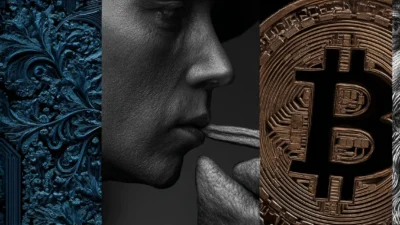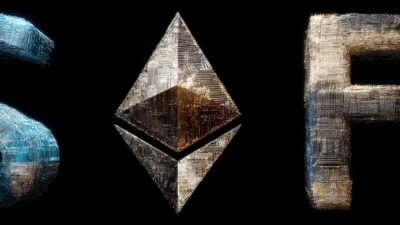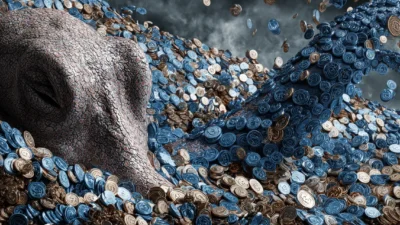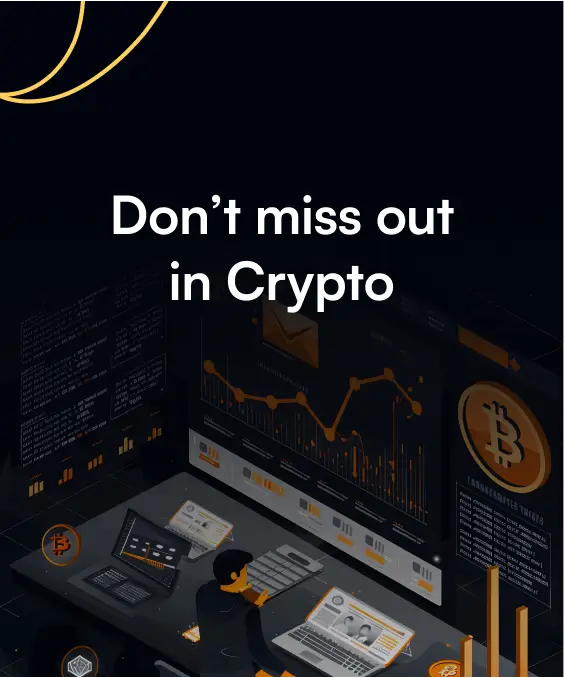TLDR
- Ripple is a protocol that allows banks on an institutional level to cheaply perform cross border payments.
- XRP is the token.
- Thanks to TikTok influencers targeting new, curious investors, the token is currently functioning similarly to popular meme coins.
If you’ve been dabbling in crypto — or even just scrolling through TikTok — you’ve probably seen Ripple and XRP popping up quite a bit. Videos claiming it’s the next big thing. Predictions that it will hit $10,000 (spoiler alert — it hasn’t and it won’t). And maybe some confusing terminology that’s left you scratching your head.
We’re here to guide you through all the hype. What is Ripple exactly? How does XRP fit in? And why is everyone — from whales to Gen Z investors — suddenly obsessed?
Ripple and XRP — Breaking It Down
First off, Ripple is NOT a cryptocurrency. It’s actually a digital payment network and protocol that launched in 2012. Think of it as the behind-the-scenes tech powering next-gen money transfers. XRP, on the other hand, is Ripple’s native crypto token, which the network uses to speed up transactions and reduce costs.
Here’s where Ripple shines — it’s not going after regular crypto buyers like you or me. Ripple’s main pitch is for banks and big financial institutions, offering a faster, cheaper alternative to old-school systems like SWIFT.
Remember those painful international wire transfers that take days and cost a fortune? Ripple’s whole mission is to fix that.
To see more about how outdated the current TradFi systems are, check out this piece on how Chainlink is the future of finance.
The Tech That Powers Ripple (Without the Fancy Jargon)
When you make an XRP transaction, Ripple skips the slow, clunky process of mining. Instead, it uses something called the Ripple Protocol Consensus Algorithm.
Everything happens in 3-5 seconds, compared to Bitcoin’s 10+ minutes — or literal days for banks. Ripple can handle up to 1,500 transactions per second, leaving most blockchain networks eating its digital dust.
For example: Imagine Bank A in the U.S. wants to send funds to Bank B in Europe. With Ripple, they can use XRP as a bridge currency — or skip it entirely, simply using Ripple’s tech to find the cheapest path between currencies. It’s efficient, flexible, and built specifically for enterprises.
Why Are People Hyped About Ripple?
- Speed: 3-5 seconds for a transaction? That’s practically instant compared to traditional banking.
- Low Costs: Ripple transactions cost a fraction of a cent. For banks, this eliminates pricey pre-funding in foreign accounts.
- Massive Scalability: Ripple isn’t just fast — it’s scalable. While most blockchain networks slow down as usage grows, Ripple’s ledger stays steady. It’s designed to handle heavy demand without breaking a sweat.
The Business Model That’s…Divisive
Here’s where Ripple gets a little controversial. Unlike Bitcoin’s decentralized structure, XRP was pre-mined back in the day — meaning all 100 billion tokens already exist. Today, Ripple Labs still holds about 48 billion tokens in escrow. Every month, they release XRP into circulation to manage supply and stabilize prices.
This model makes traditional finance types (like the banks Ripple is courting) feel at home. But hardcore crypto purists (Like us!)? They side-eye Ripple for going against the decentralized ethos of blockchain. Fair? Maybe. But it hasn’t stopped Ripple from signing deals with major banks worldwide.
Pros and Cons of Ripple (AKA Why Some Folks Jump on Board — and Why Others Don’t)
Pros
- Real-World Use Cases: Banks and financial institutions actually use RippleNet. We’re not just talking pie-in-the-sky ideas here.
- Energy Efficient: Unlike Bitcoin, XRP doesn’t guzzle energy to function. It uses about as much energy per year as 50 U.S. households. (While that looks good compared to Bitcoin, most non-POW blockchains use less power than BTC and Ripple.)
- Cost Savings for Banks: RippleNet clients can save up to 60% on international money transfers. That’s hefty.
Cons
- Legal Drama: Ripple’s been fighting a lawsuit with the SEC over whether XRP counts as a security. Until there’s a resolution, the uncertainty makes U.S. trading tricky.
- Centralization Concerns: Ripple Labs controls a big chunk of XRP supply, which raises some eyebrows in the crypto world.
- Banks Don’t Always Use XRP: Most RippleNet clients leverage Ripple’s infrastructure without actually touching XRP tokens, which can limit the token’s demand.
Where Ripple Stands Today
Okay, so why are we suddenly seeing Ripple and XRP everywhere? A combination of factors is driving the buzz:
Legal Optimism
Speculation around Ripple’s ongoing legal battle with the SEC took a positive turn when the resignation of the SEC’s chair fueled hopes for a favorable resolution. If Ripple wins, XRP’s price will likely surge — and if not, well… that’s a risk many investors are debating right now.
Whale Moves and Gen Z Hype
Crypto whales recently scooped up $1.12 billion worth of XRP. But it’s not just whales — Gen Z investors are all over the XRP trend, fueled largely by TikTok.
Under popular hashtags, influencers predict prices that could rival Bitcoin, and retail investors are keen to get in on the perceived “undervalued” action. For them, buying XRP at under $2 feels way more accessible than saving up for pricey Bitcoin or Ethereum.
What Does All of This Mean?
Now it’s time for Dypto’s two pennies. Is Ripple a legitimate business? Yes. But as a crypto token? It’s fishy. Really, really, fishy. Something is not adding up for us.
The Math Doesn’t Math
The FDV is $240 billion at its current price, $2.40. However, the DeFi chain ranks 55th according to DeFi Llama, with only a bit over $60 million in TVL. There are only a couple of projects. We checked out one, which was the only DEX on the chain. There was ETH, BTC, and some meme tokens we had never heard of before.
So how does a protocol this big with its own DeFi chain have such a small TVL with so few users and no developers building on it? Something is not adding up.
The Hype Is Scary
While XRP is not a meme token, the social media hype and all of these young new crypto users blindly throwing money into something they don’t know or understand is disturbing. We’re afraid to say that this will end poorly for many of them.
XRP and Ripple are not for you. It is a protocol used exclusively by banks for cross border payments. They aren’t the only ones working on solutions for this problem either. Stripe, PayPal, and dozens of other companies, in both crypto and traditional FinTech companies, have or are working on solutions.
It is not Bitcoin. It is not the next Bitcoin. It is an overhyped token that is being promoted by influencers who bought large bags in the last bull cycle and held on to it when the price went down to next to nothing. While not a meme token, it’s currently functioning like one.
The Centralization is Scarier
Lastly, the level of centralization is astounding. No other crypto organization is operating with such gaul. To put it simply, it’s a private company that owns a money printer and prints as it sees fit. For anyone that understands why crypto became a thing in the first place, this goes against everything the idea stood for.
The token’s utility is…well…optional. The company doesn’t force the banks using its service to use the XRP token for anything. That means it has no real utility other than to dump it on the market, pay influencers to hype it up, and then sell it to pump the numbers for quarterly reports. Seems sketchy, doesn’t it?
CAUTION. If you’re a new investor or crypto user, please perform due diligence on Ripple and XRP. We did. We didn’t like what we found. Again. Proceed with caution.












